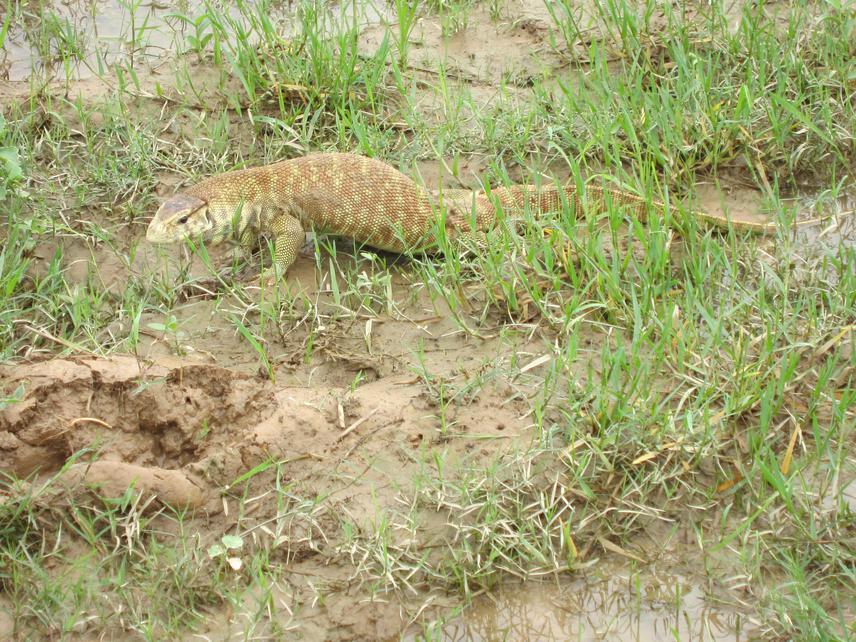Ajay Karki
This project aims to find out the status & distribution of and threats for species. And, will record the traditional beliefs and create the awareness among local people in Jagadishpur area, Nepal.

Golden Monitor Lizard (GML) is listed in Appendix I of CITES, as lower risk in red data list of IUCN and is under the protected reptile list of Government of Nepal; however the species has got very low conservation priority at research and implementation level in Nepal. The destructive combination of array of causes like; habitat fragmentation & destruction, poaching & illegal trade, and land-use conversion to crop land have contributed collectively to plummeting of population in Nepal. Many times, tradesmen exporting the hides of GML to China have arrested from different check points.
This project is purposed to conduct in and around Jagadishpur reservoir of Nepal; which is listed as Ramsar site in 2003, recognizing it’s hydrological and biodiversity value. It is aimed to find out current conservation status & distribution of, and threats for species in the area. Visual encounter and & area search method will be used for this purpose. Ethno herpetological survey will be carried out to prove the above findings and to know the reflection and experience of local people towards decreasing population and ecological value of species. Traditional beliefs and knowledge among local people found if any; will be documented. Secondly, it is aimed to increase the awareness level about ecological importance of GML among local people through training, workshop and poster presentation, and hoping these will increase the positive involvement for conservation and decrease the negative activism for habitat destruction and poaching. These activities are purposed assuming that, conservation without participation is impossible and participation is the easiest and convenient way for sustainable conservation in developing countries because they have closest relation with biological resources.
The outcomes of the projects are expected to be helpful for fixing first-brick towards GML conservation in Nepal, especially in the direction of minimizing poaching and taking appropriate management action for future actions by setting conservation priorities.